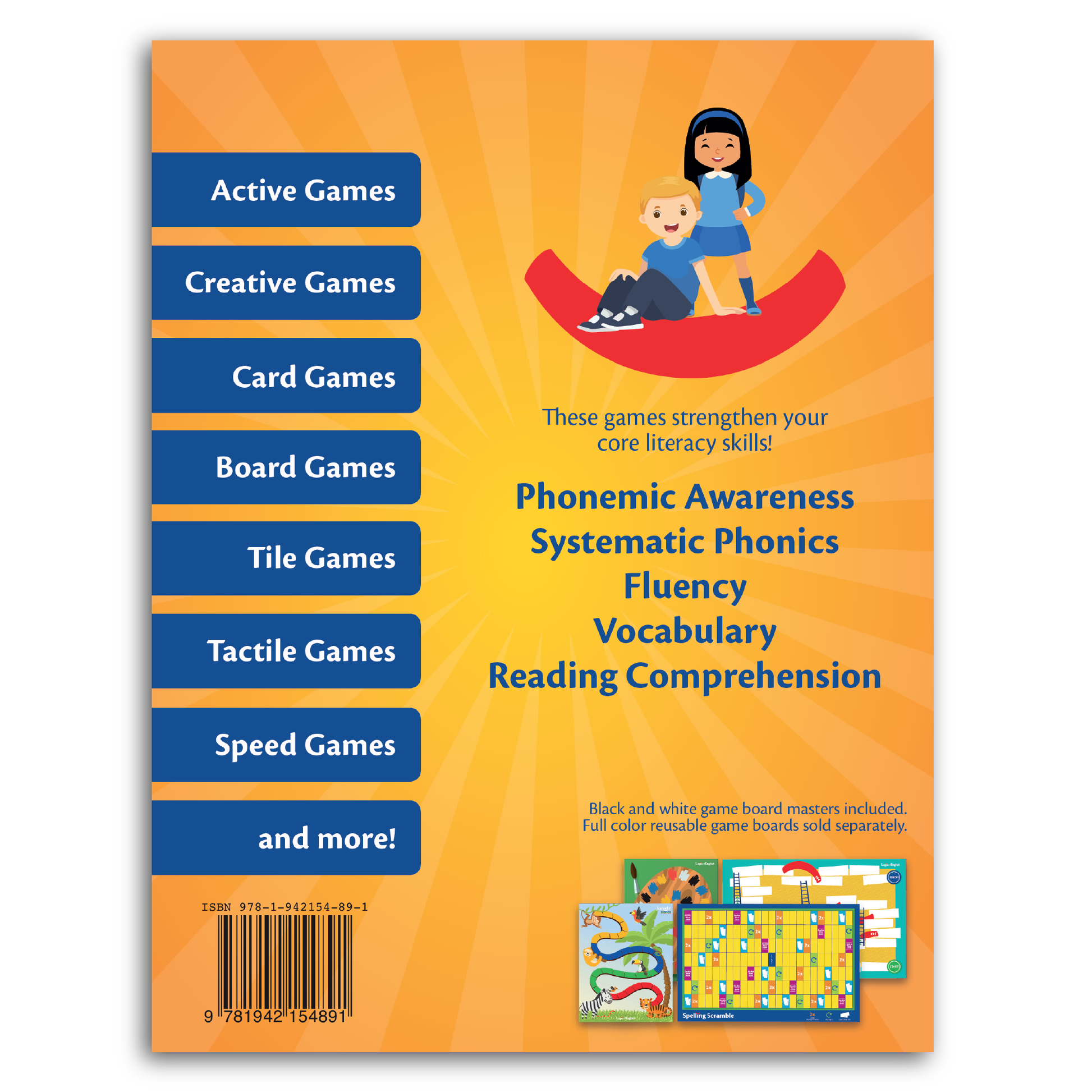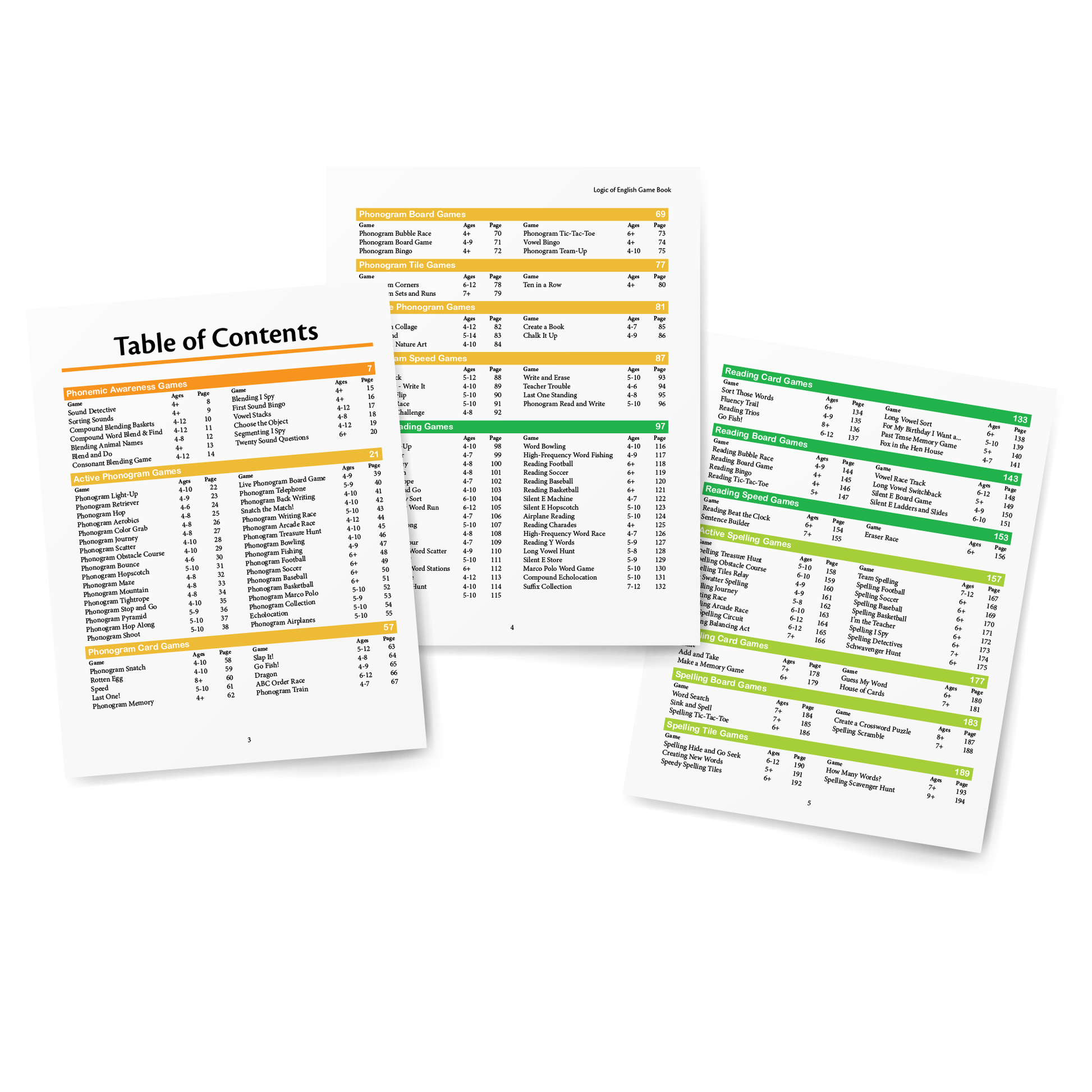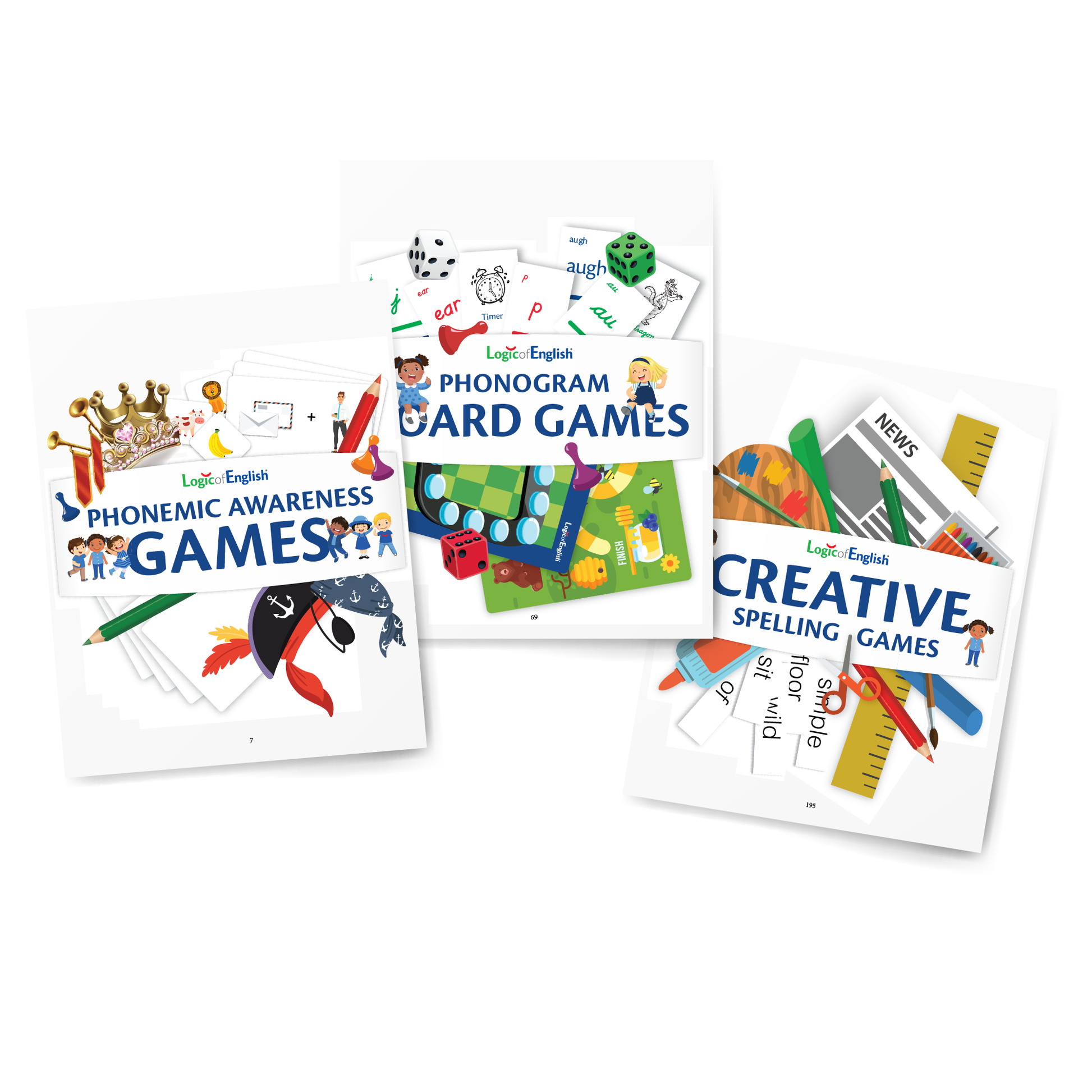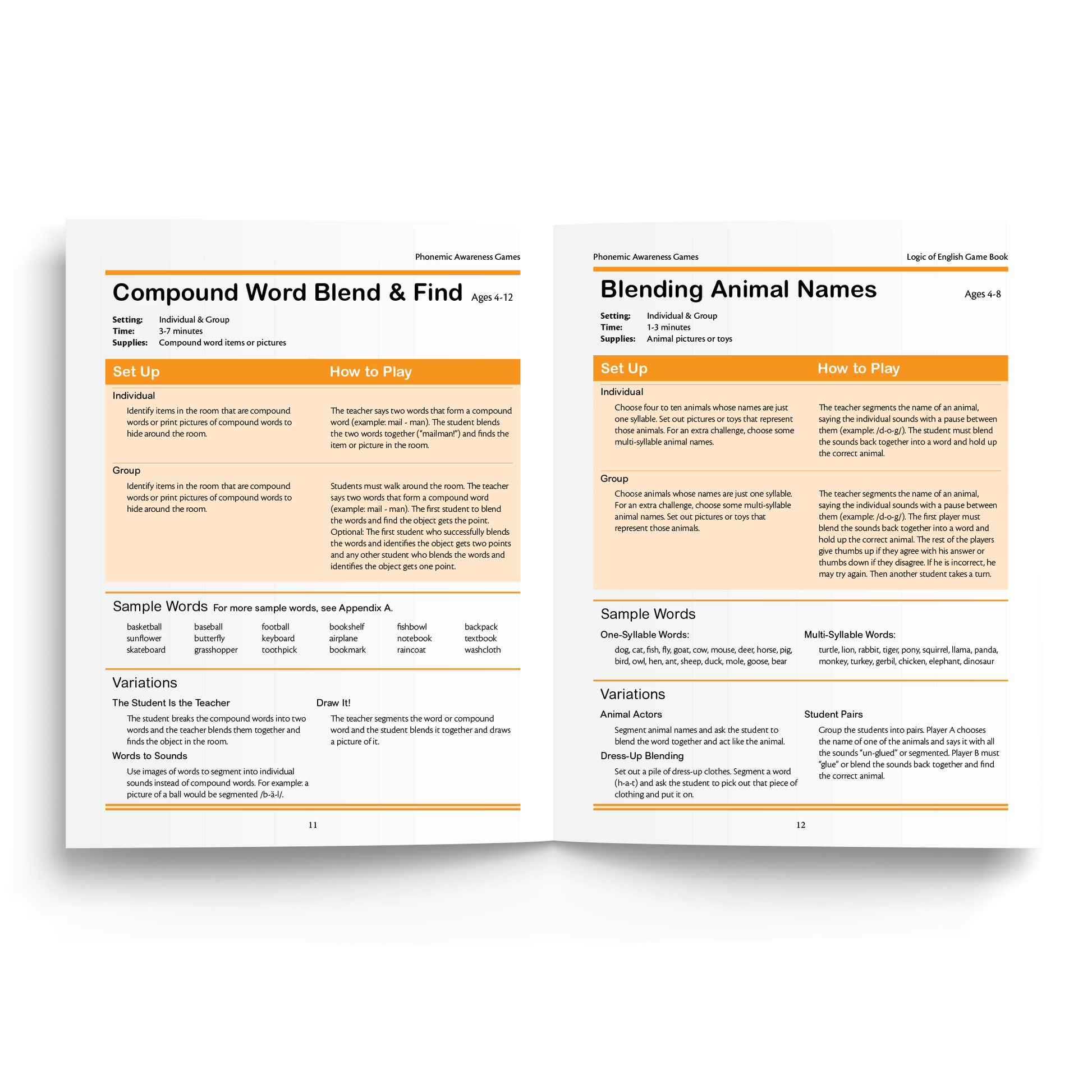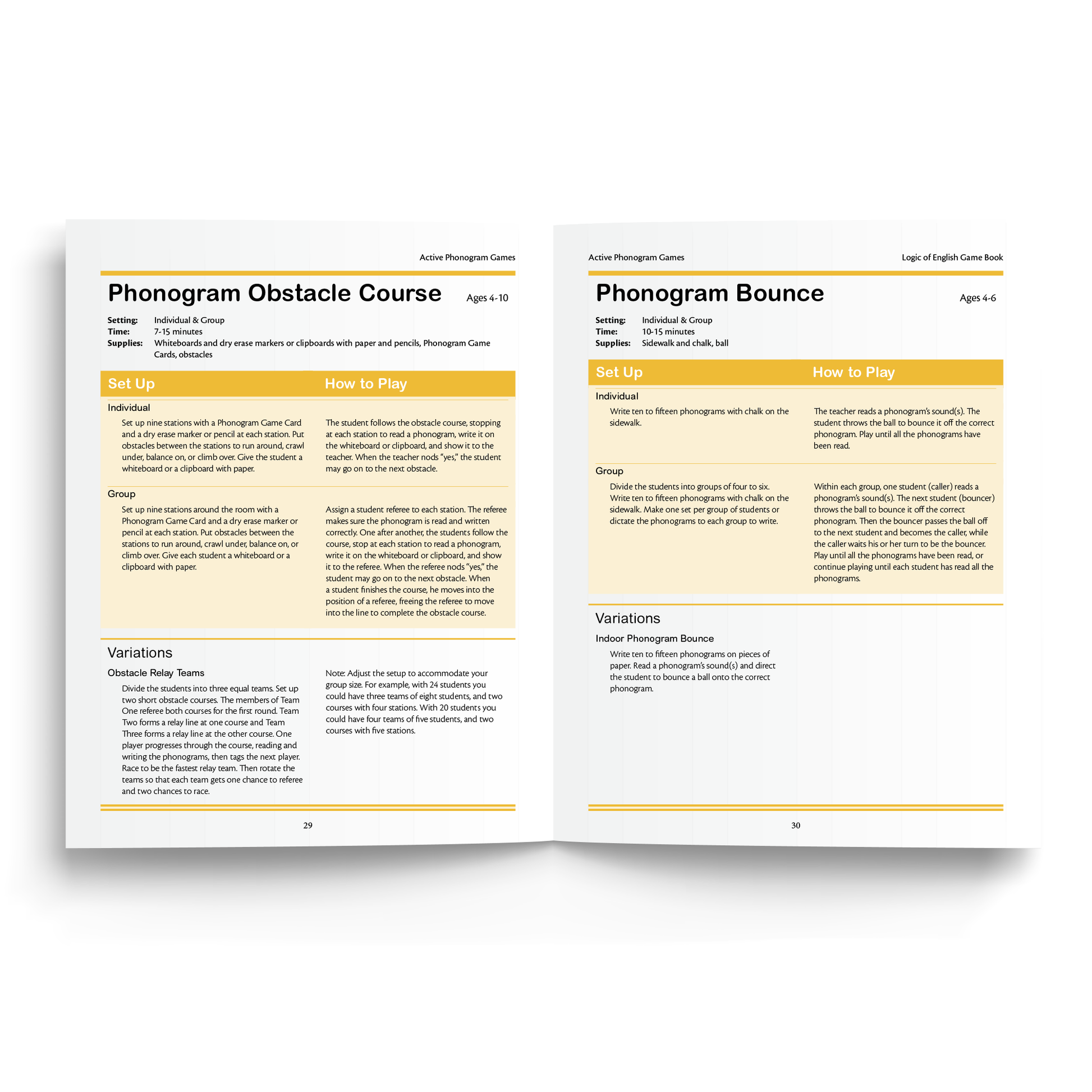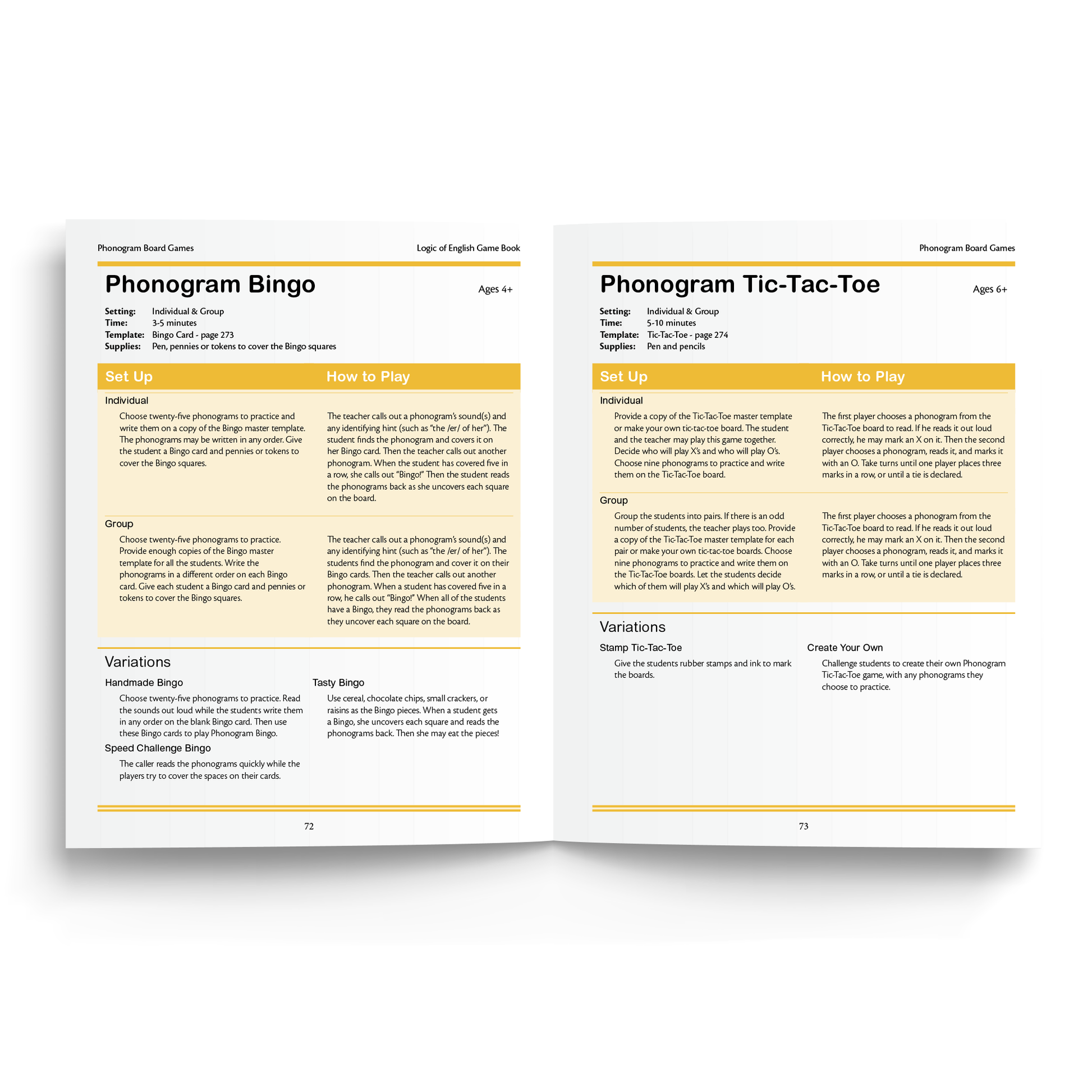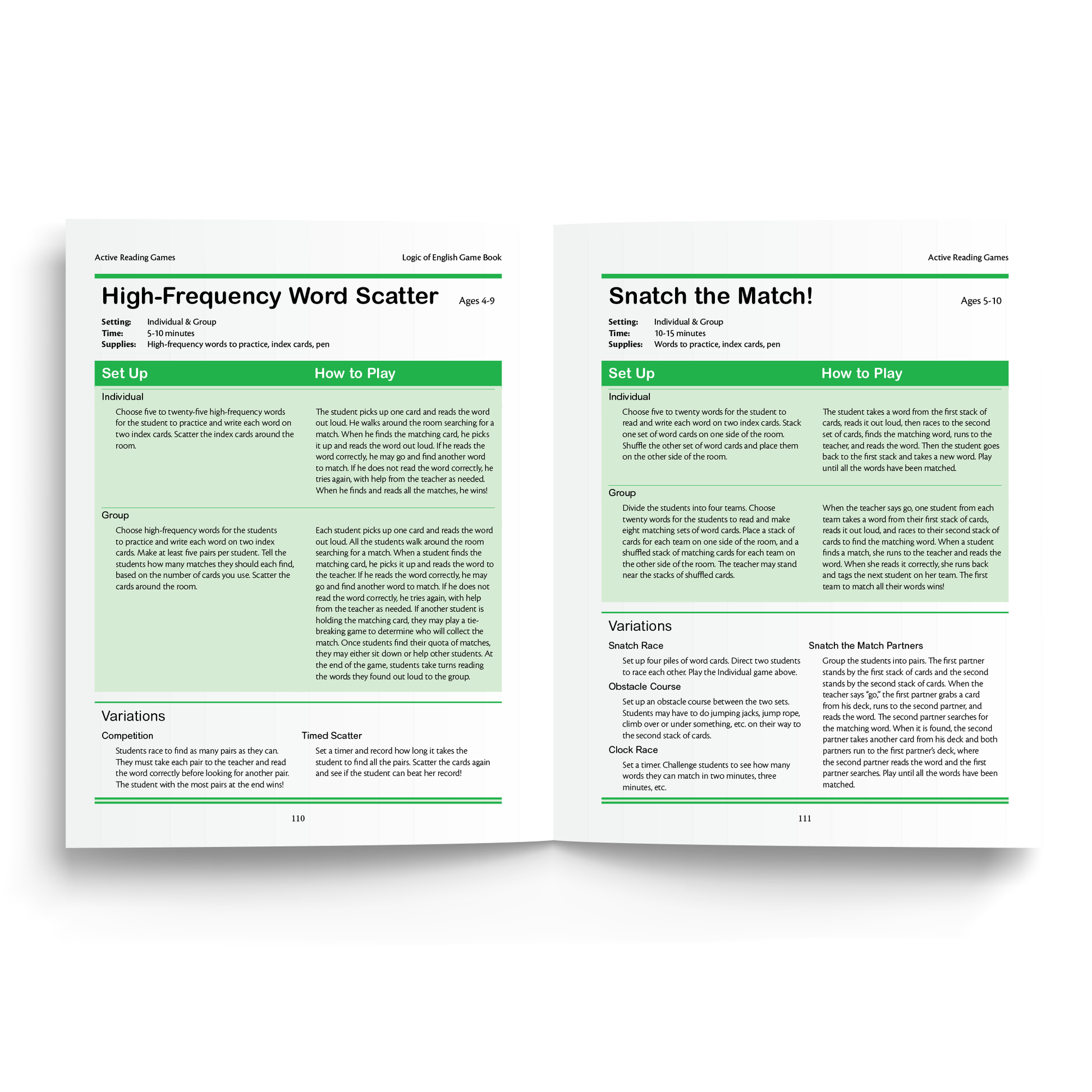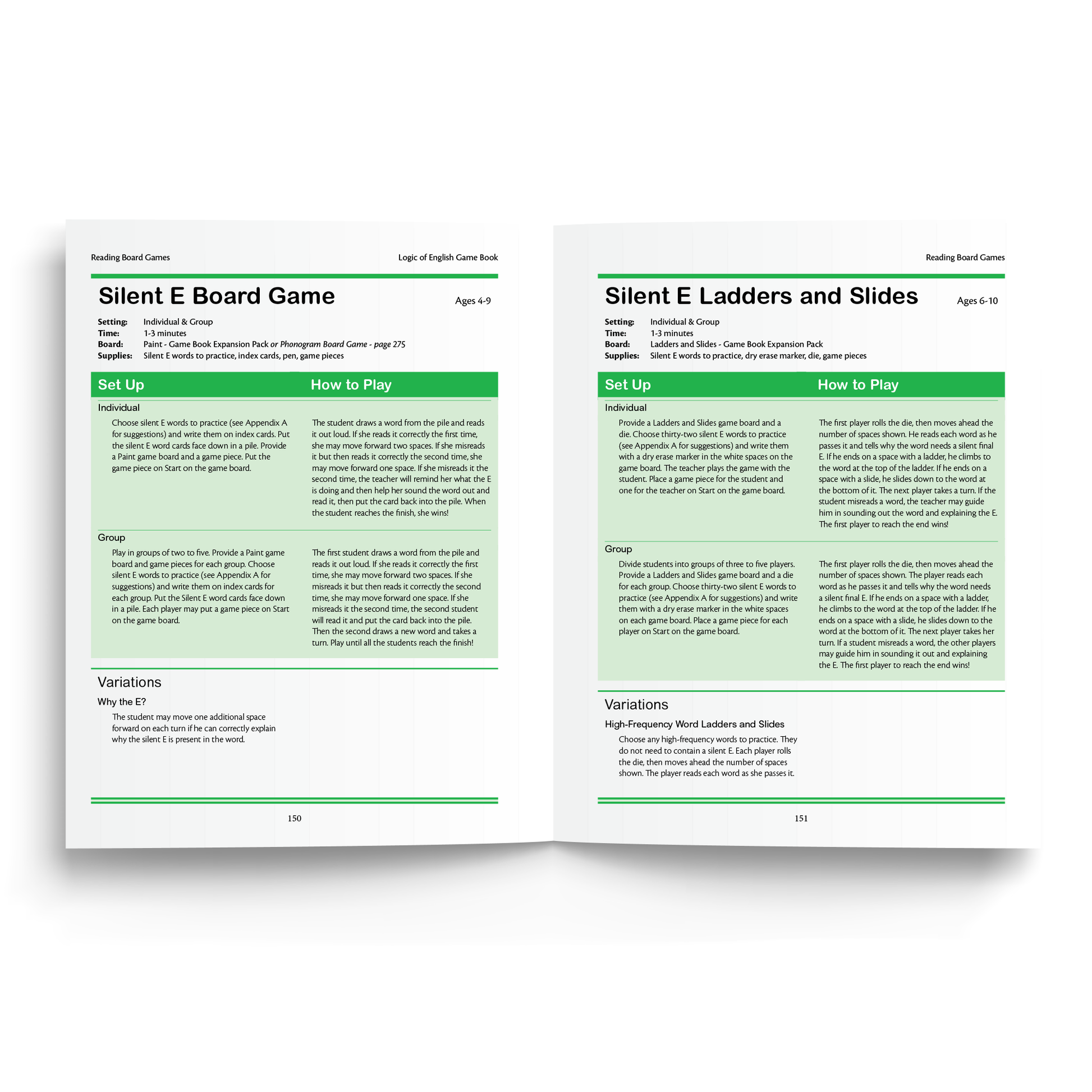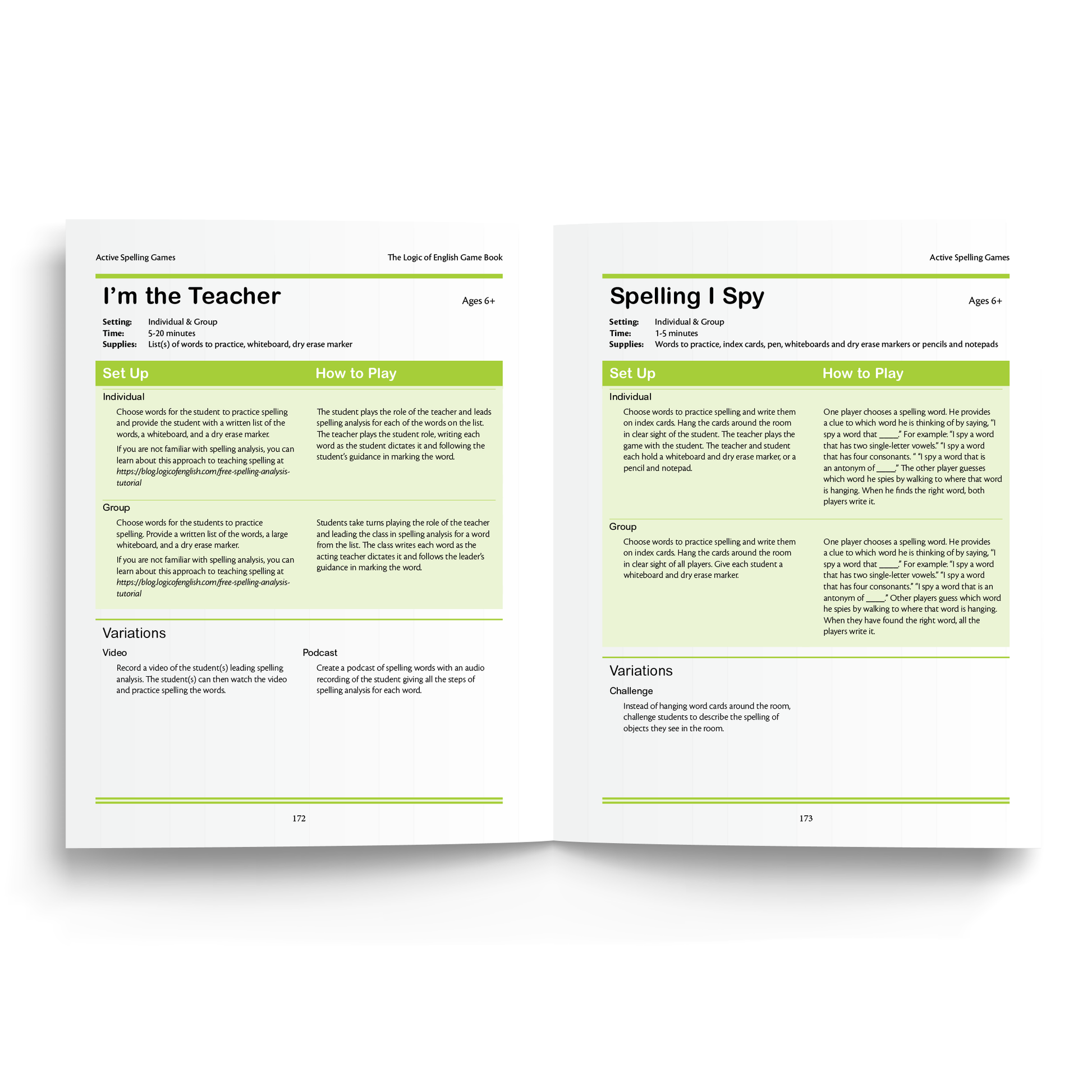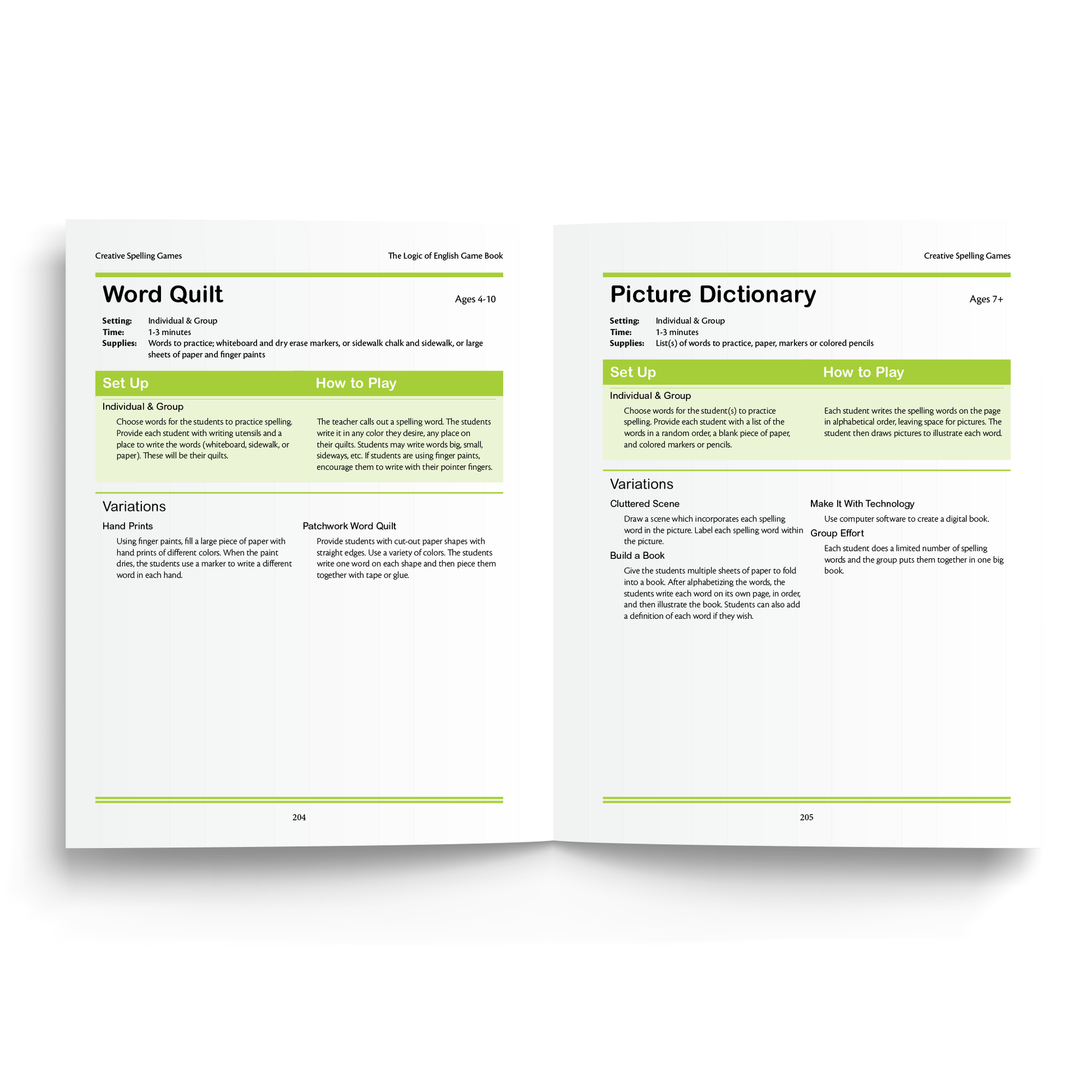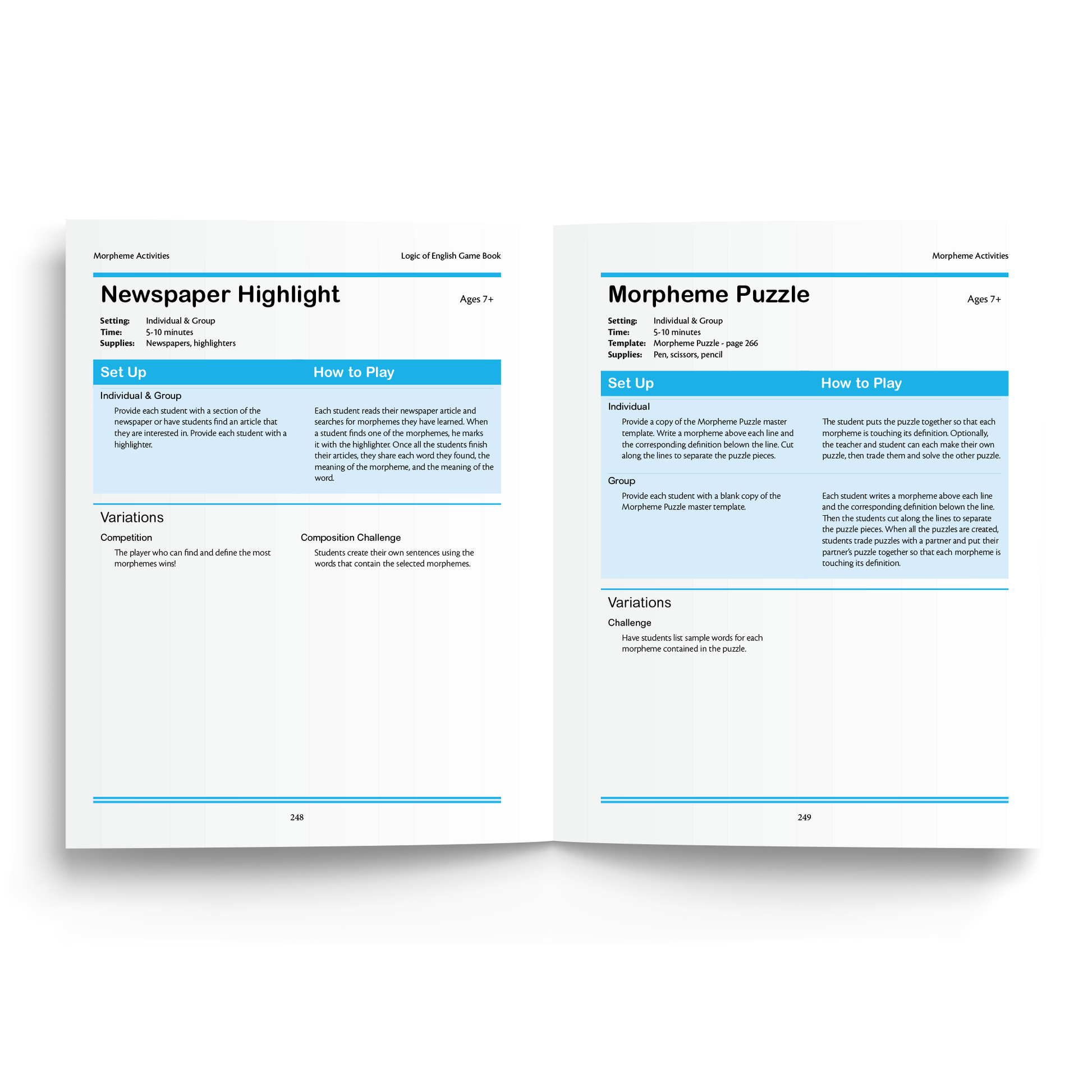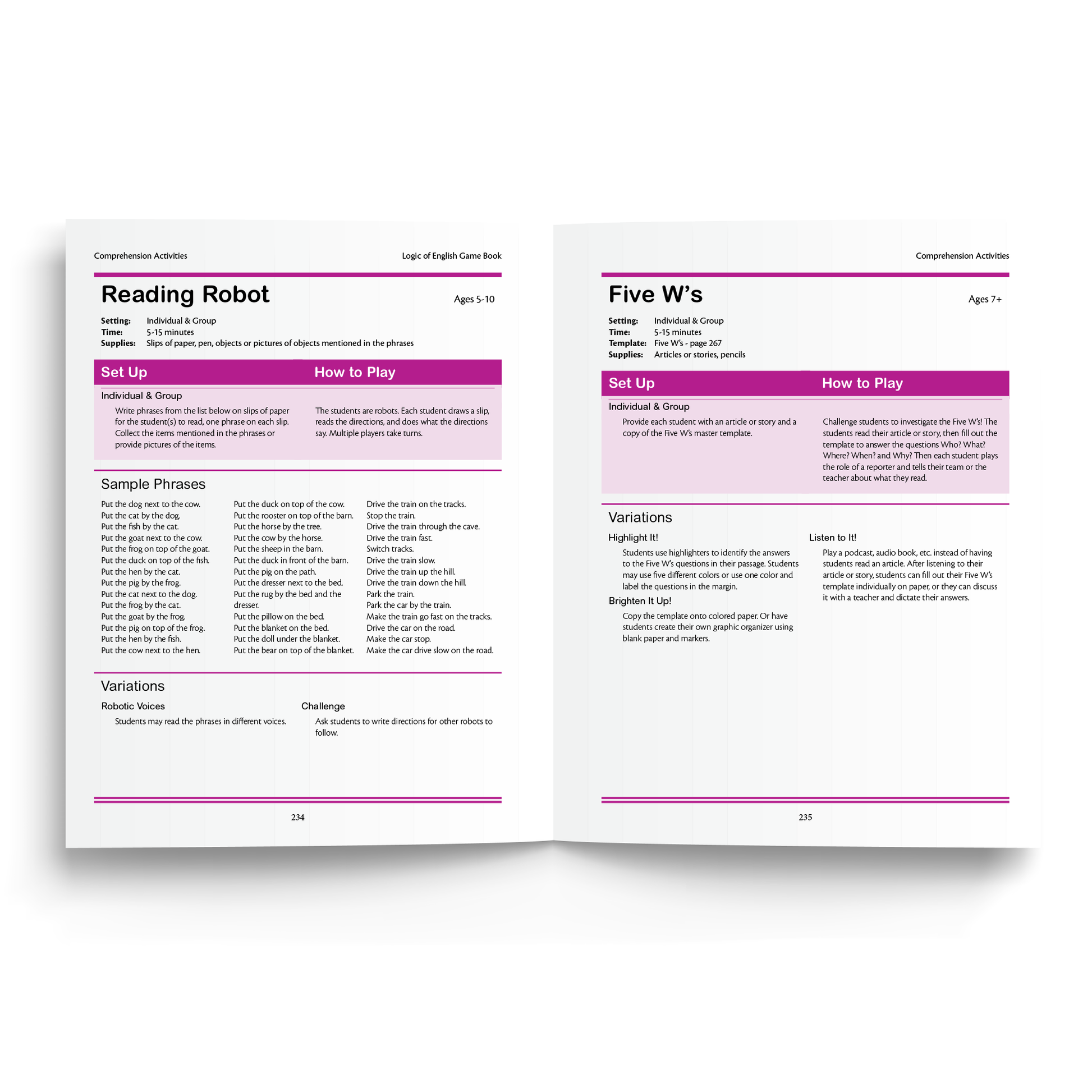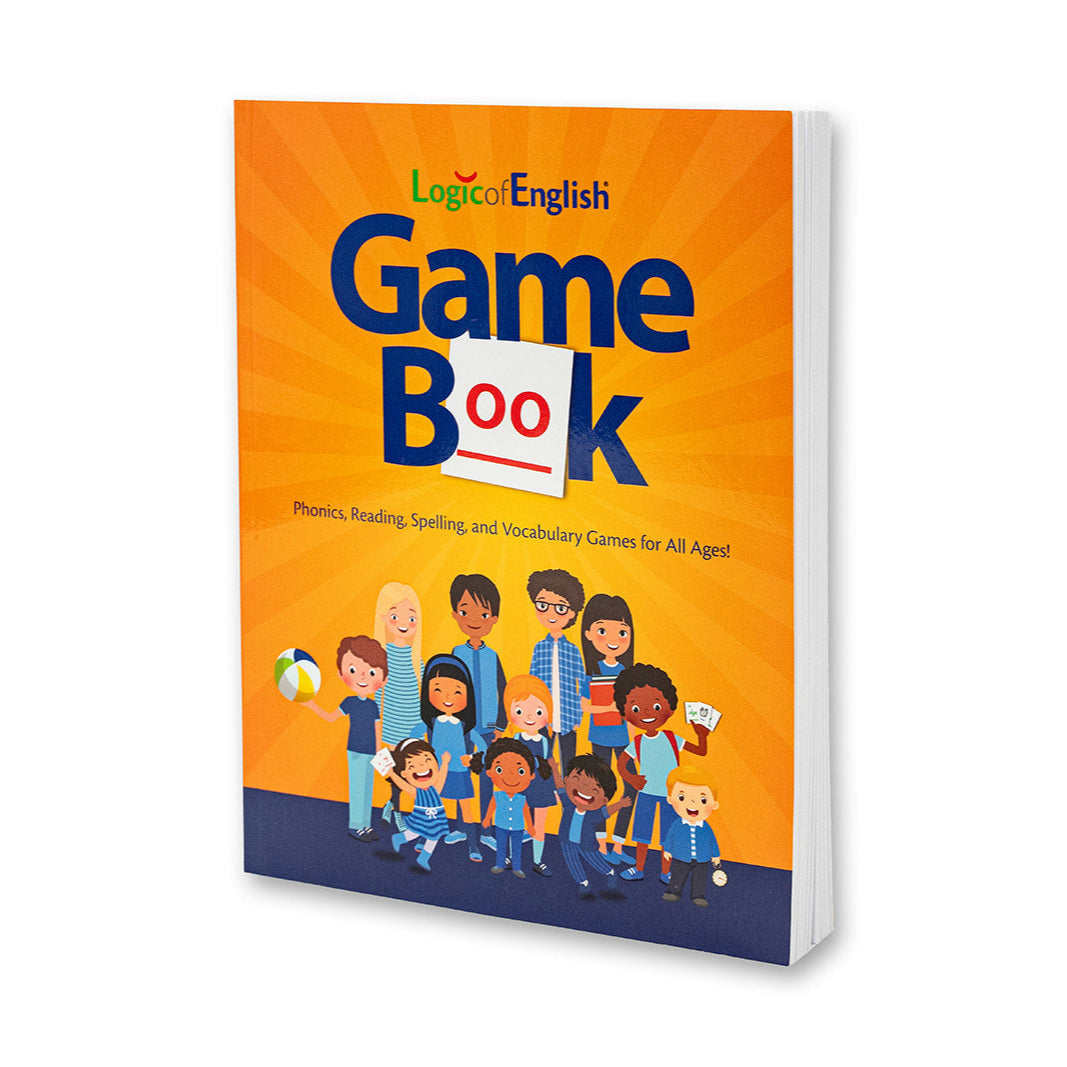

Why Is Phonemic Awareness Important?
Reading at its most elemental level is about sounds. Written words are a series of phonograms or pictures of sounds. To read a word, students need to be able to blend spoken sounds into a word.
Many striving readers try to memorize whole words or guess unknown words using the first letter, context, or pictures. The inability to quickly and accurately blend words limits students’ comprehension of what they are reading.

The Importance of Blending & Segmenting
According to research, the most important phonemic awareness skills are the ability to blend and segment words (Eunice Kennedy Shriver, 2000).
Blending and segmenting should be the focus of phonemic awareness instruction for emerging readers in kindergarten and first grade as well as for striving readers (Brady, 2020).
Steps to Developing Phonemic Awareness
Exploring Sounds
-

Develop a Kinesthetic Awareness of Sounds
English phonemes (sounds) are made by shaping the mouth into different positions and turning the voice box on or off. An awareness of how sounds are produced supports reading and spelling instruction (Boyer & Ehri, 2011).
-

Distinguish and Identify Sounds
To be able to read and spell, students need to recognize and distinguish the sounds in the language. A kinesthetic awareness of sounds helps students feel the differences when it is difficult to hear them.
One-Syllable Words
-

Blend two words into a compound word.
By auditorily blending two words into a compound word (with no print involved), students are introduced to the idea that words can be broken apart and put back together.
-

Blend words with two phonemes.
The skill of blending sounds together is foundational to reading. The simplest words to blend are words that have only two sounds (phonemes).
-

Blend one-syllable words without a consonant blend.
Once students demonstrate an understanding of blending words with two sounds, they are ready to blend consonant-vowel-consonant (CVC) words. Continue to practice this skill until they are able to easily and quickly blend CVC words from an auditory prompt.
-

Blend two consonants.
Many students struggle to read words with consonant blends. By practicing the skill of blending consonants in isolation, students develop a foundational skill needed to decode these words.
-

Blend one-syllable words with a consonant blend.
Practicing blending one-syllable words with consonant blends (CCVC or CVCC words) helps to build confidence and teaches the foundational skills needed to read words with consonant blends.
-

Segment one-syllable words.
As students master blending one-syllable words, they are ready to begin segmenting them. The ability to segment a spoken word into its individual sounds is the first step in being able to spell it.
Initial, Final, Medial Sounds
-

Initial Sounds
Once students have mastered the skill of segmenting one-syllable words, they are ready to identify the initial sound. Changing the initial sound to create new words builds further upon this skill.
-

Final Sounds
Identifying the final sound is a bit more difficult than identifying the initial sound. As students practice each step, they become increasingly aware of the sounds in words and able to identify, isolate, and manipulate the sounds in words.
-

Medial Sounds
Identifying the medial vowel sound is difficult for many students. This results in students misspelling vowels. Learning to accurately hear and identify vowels in the context of words prepares students to become strong readers and spellers.
Multisyllabic Words
-

Blend multisyllabic words.
Blending multisyllabic words is more difficult than blending one-syllable words. Begin instruction with two-syllable words and then progress to three-and four- syllable words. Learning how to blend multisyllabic words helps students to be able to decode longer words.
-

Segment multisyllabic words.
As students become comfortable segmenting one-syllable words, increase the difficulty by adding first two- and then three-and four-syllable words. This skill is vital for learning how to spell longer words.
As students learn phonograms and apply them to words through spelling analysis, they will continue to deepen their phonemic awareness skills.
(Brady, 2020)
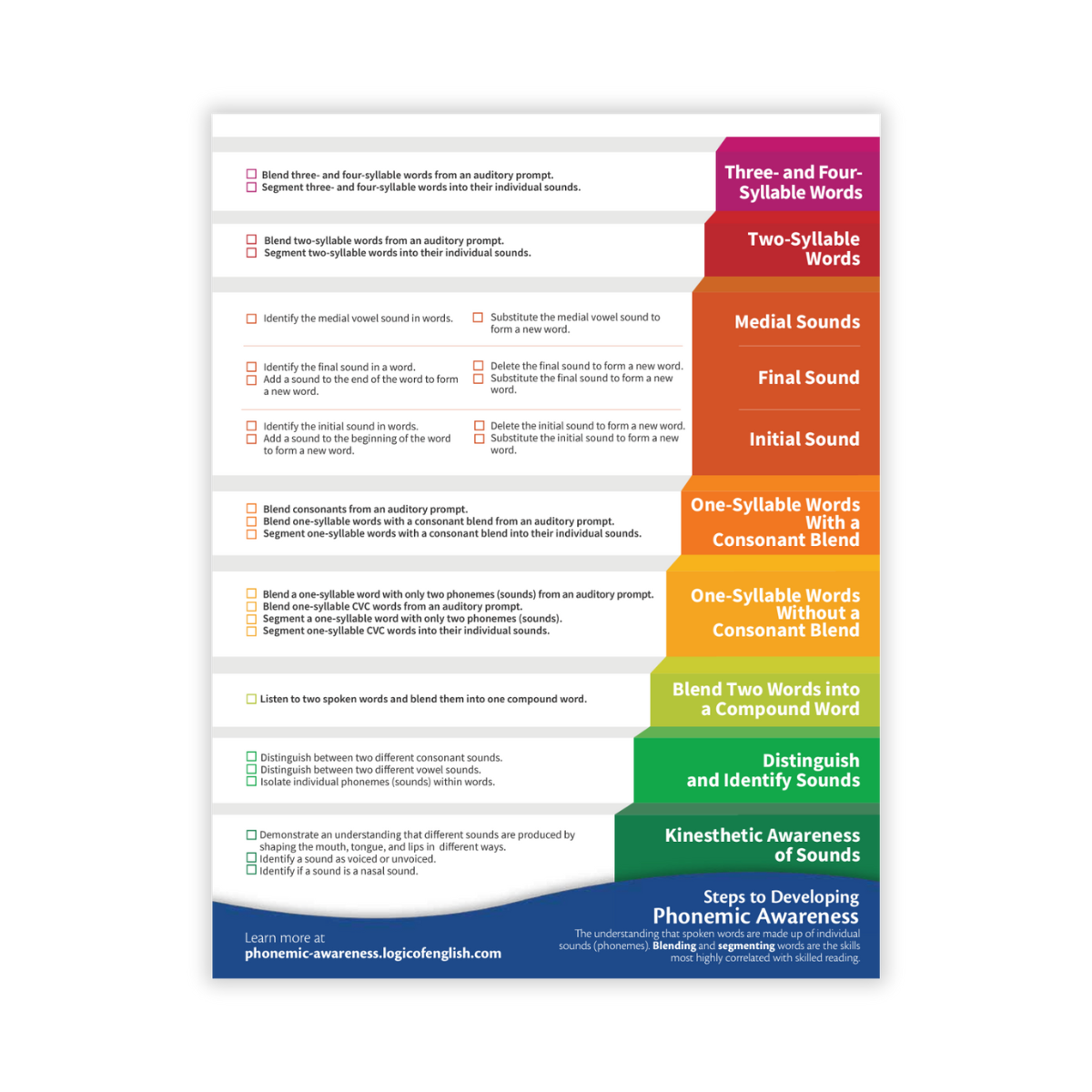
Track the mastery of phonemic awareness skills.
Find more phonemic awareness games and practice activities in the Logic of English Game Book!
Phonics, Reading, Spelling, and Vocabulary Games for All Ages!
Help your child discover the joy of learning with the Logic of English Game Book.
An easy way to incorporate a multisensory approach into your lessons, the Logic of English Game Book gives parents and teachers the materials needed to make learning fun, enjoyable, and unforgettable!
With over 300 games and activities, this game book will strengthen your child’s:
- Literacy skills
- Segmenting and blending skills
- Phonemic awareness skills
In addition, the Game Book features high-energy games, creative games, card games, board games, tactile games, and more!
Most games include directions for both group and one-on-one settings and provide engaging practice ideas to practice key skill sets while respecting students’ needs for variety and movement!
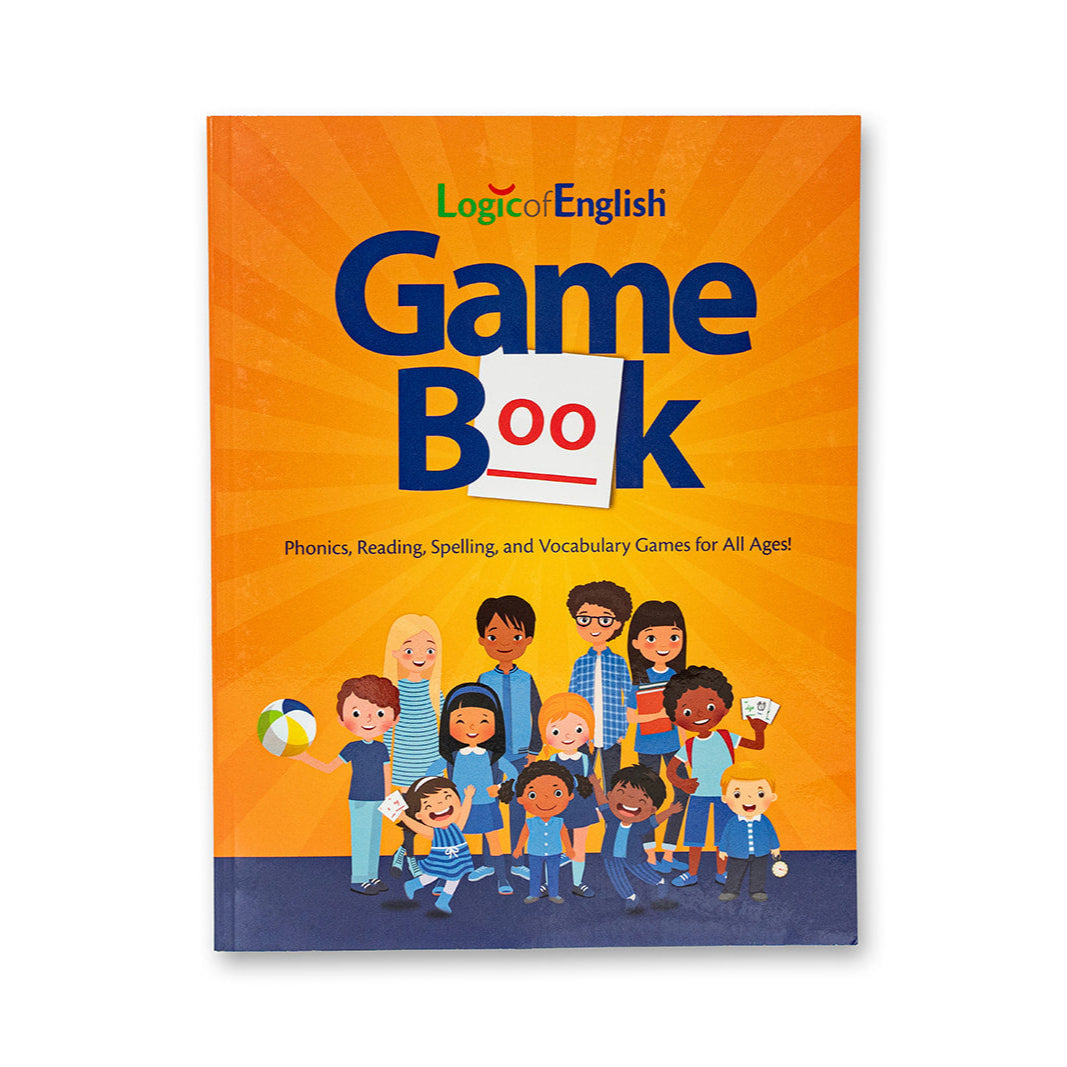
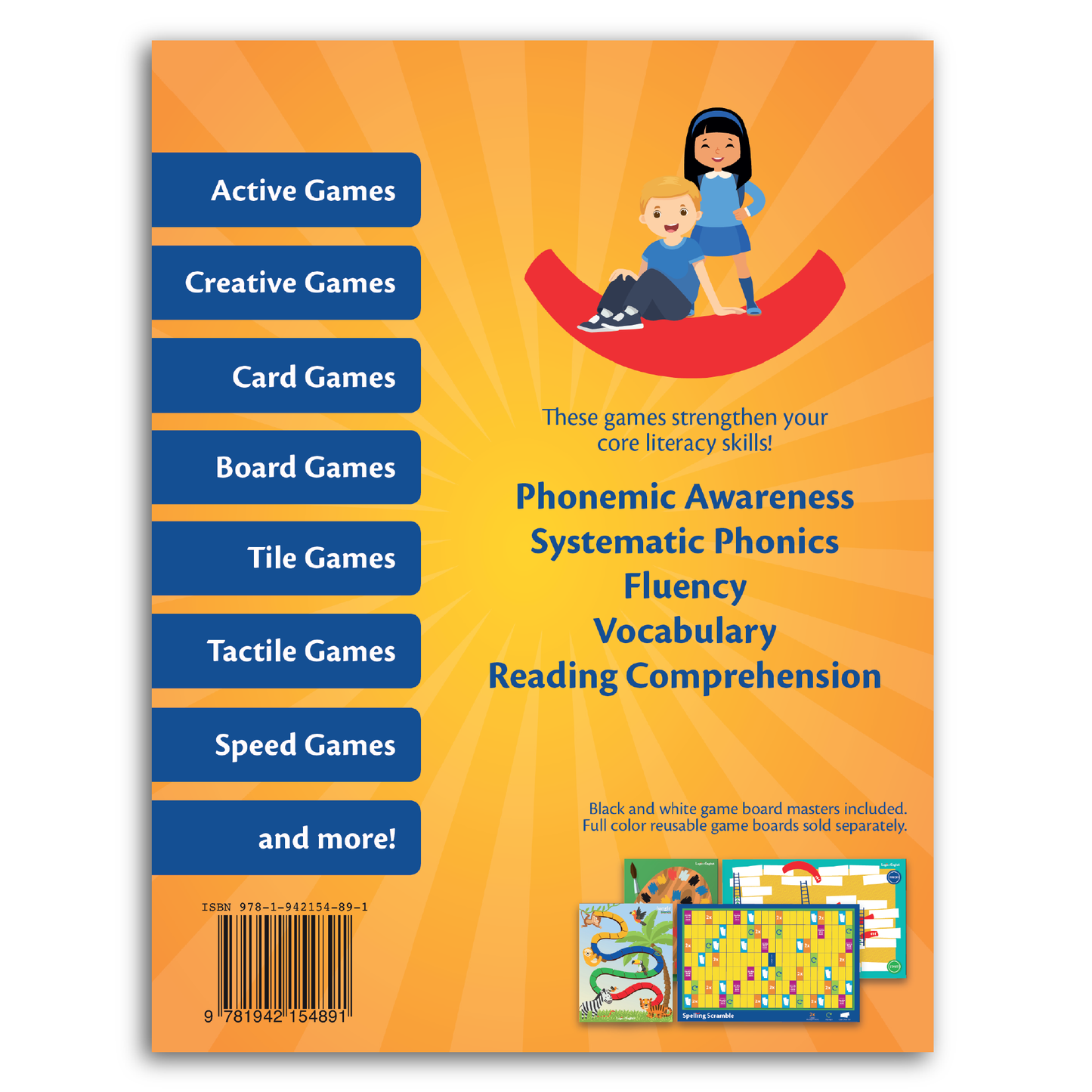
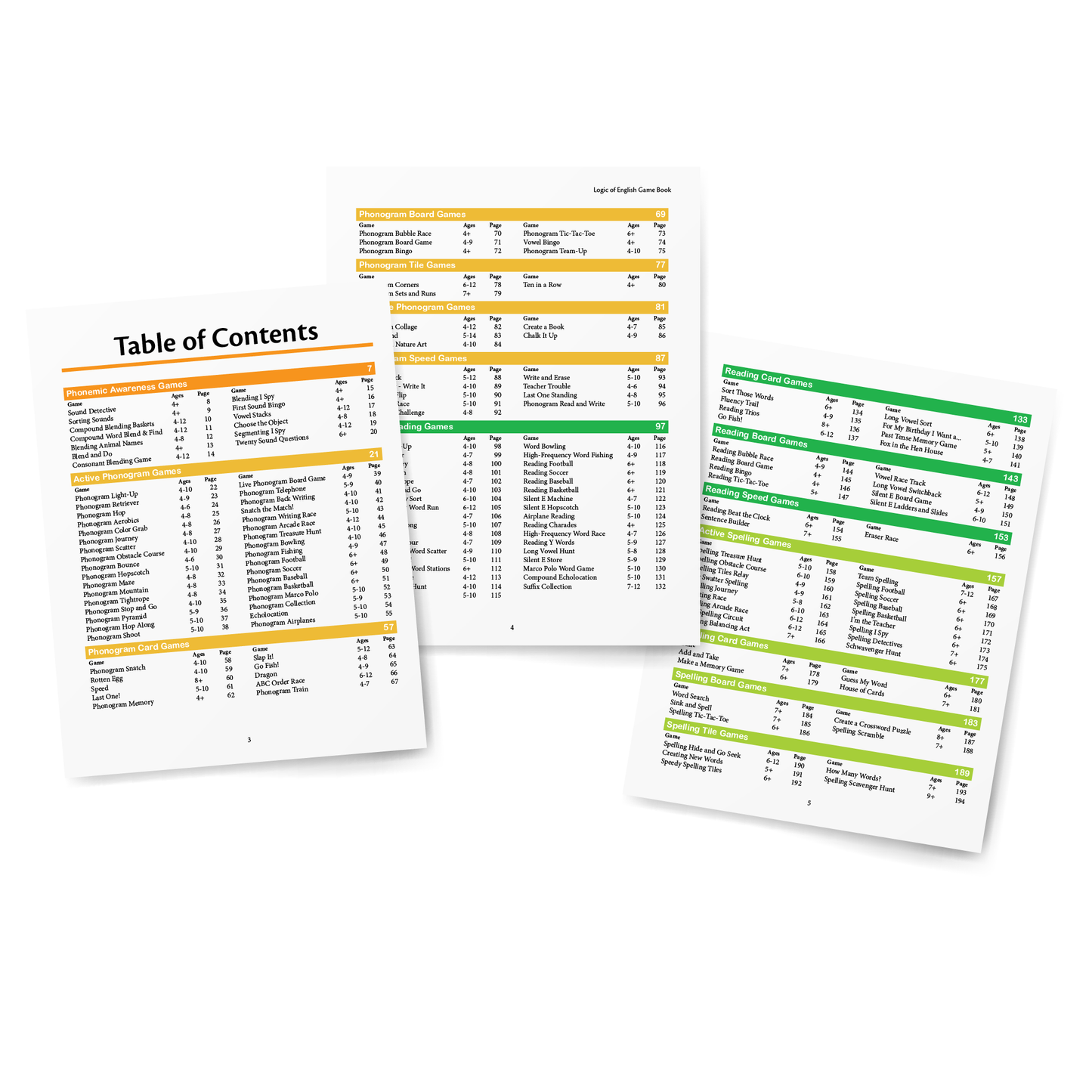
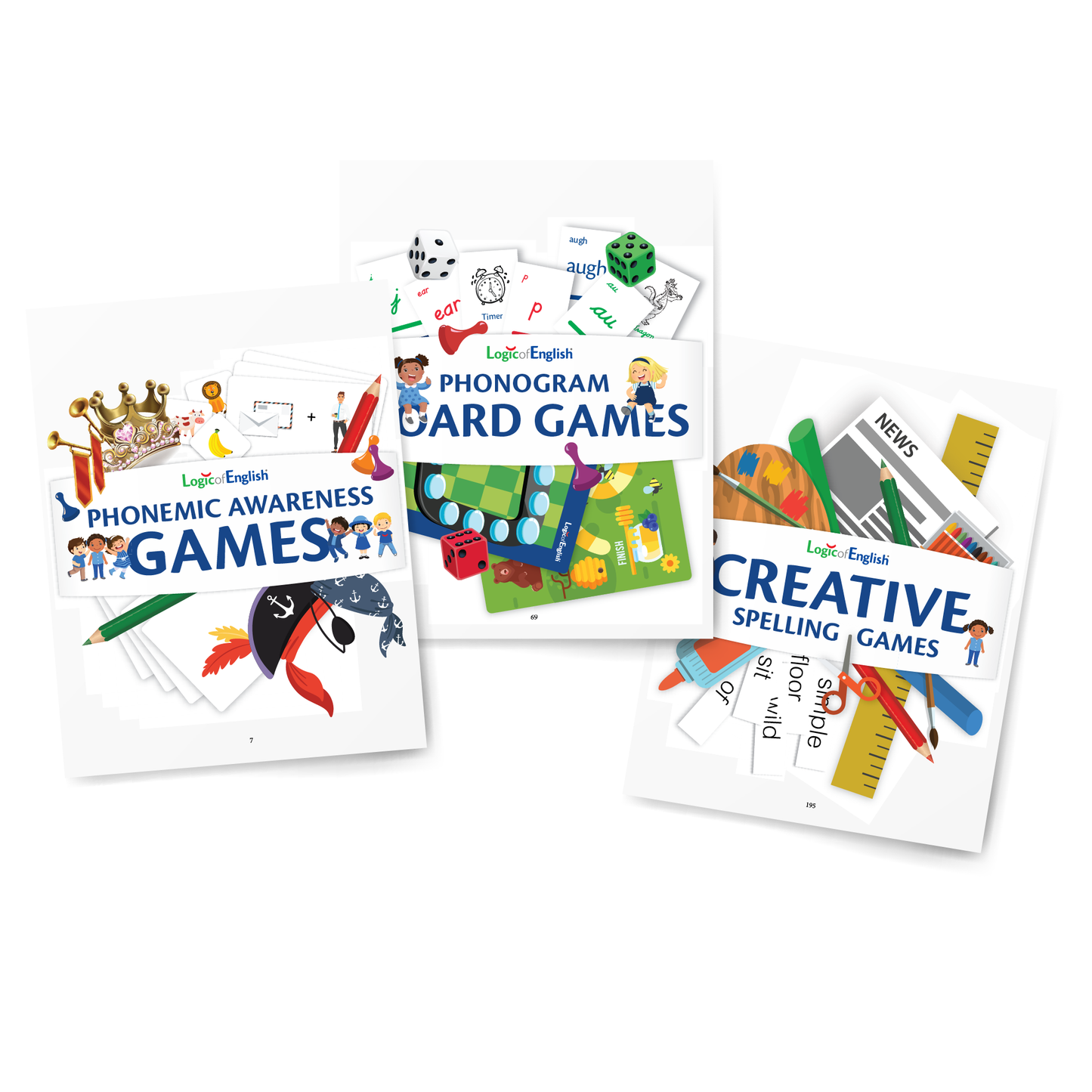
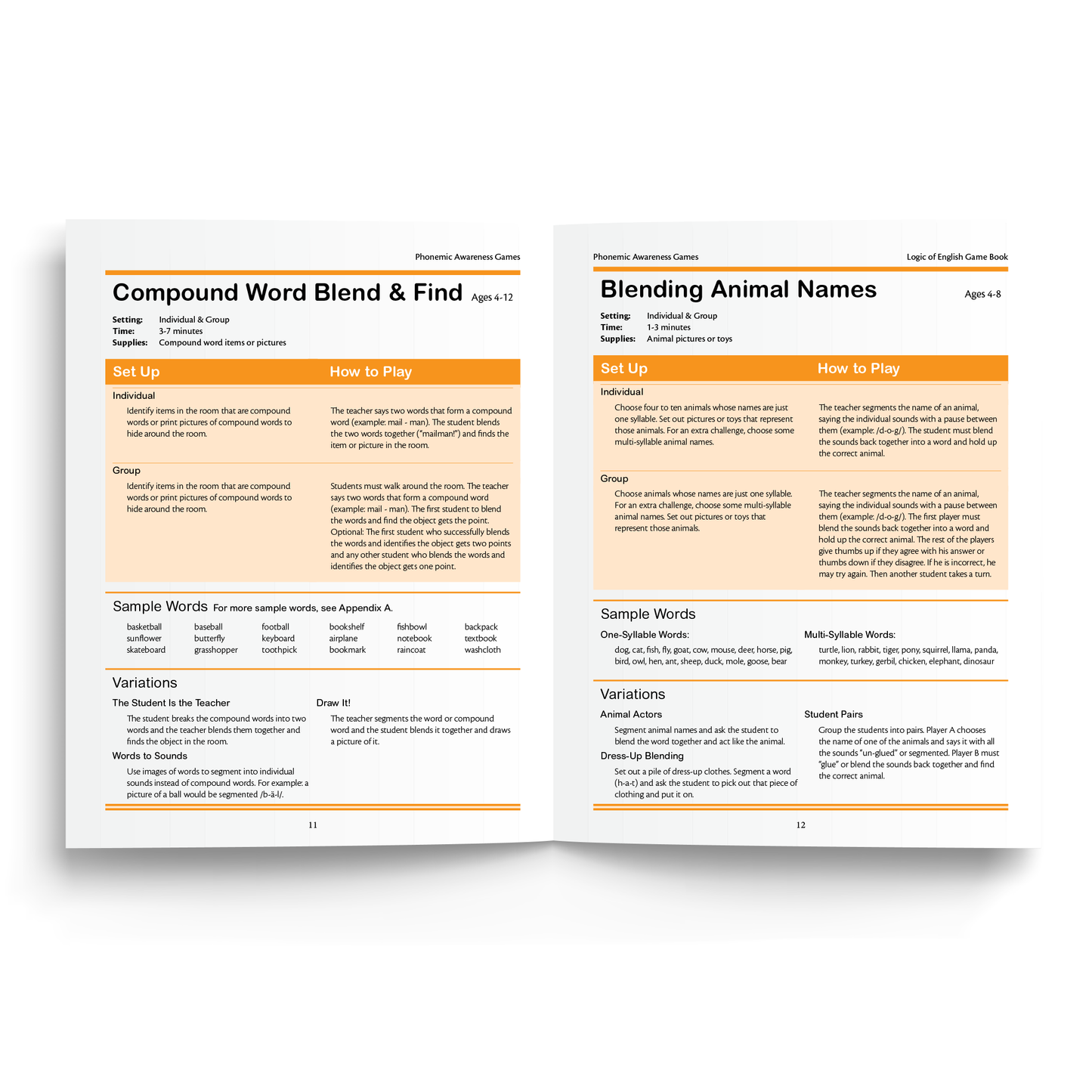

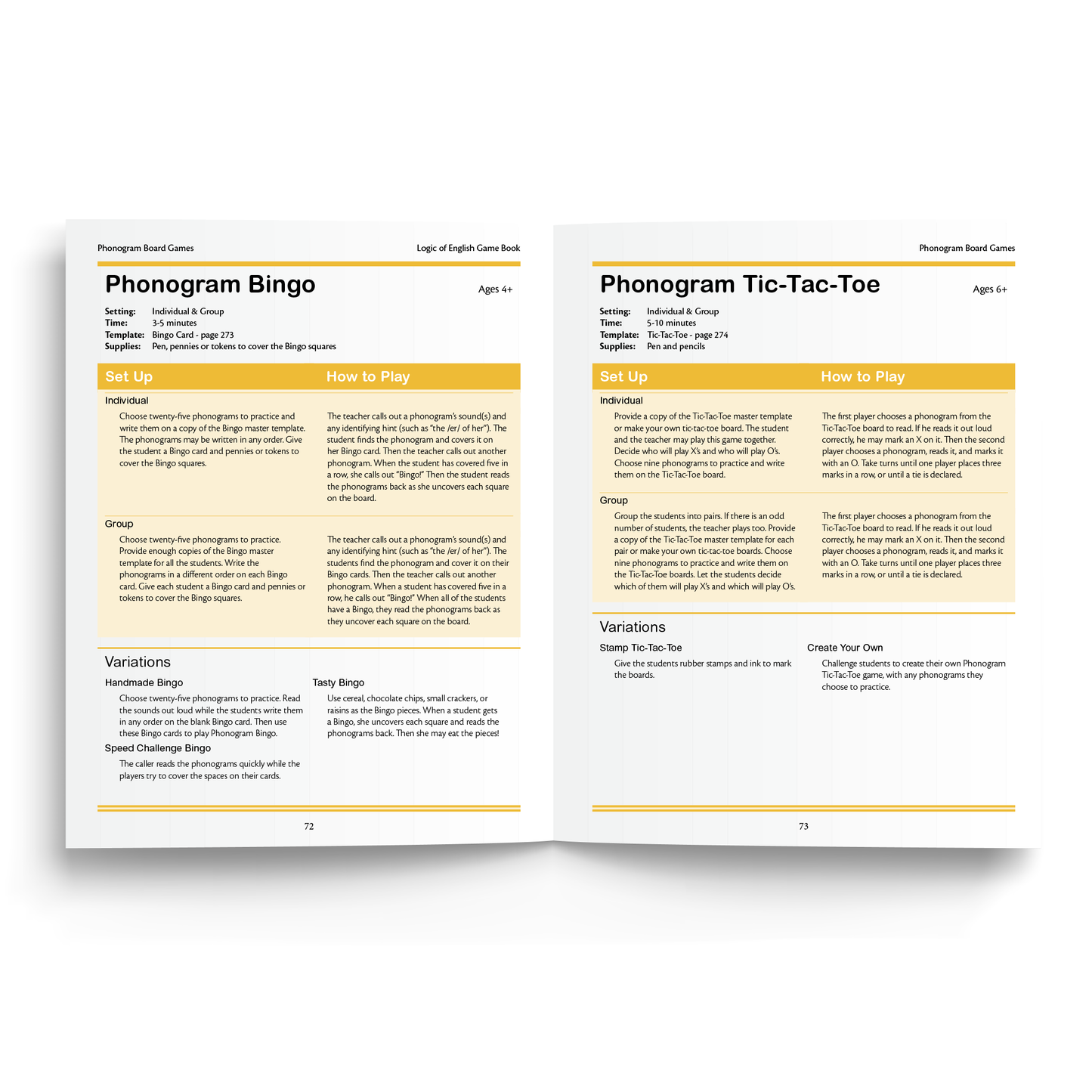
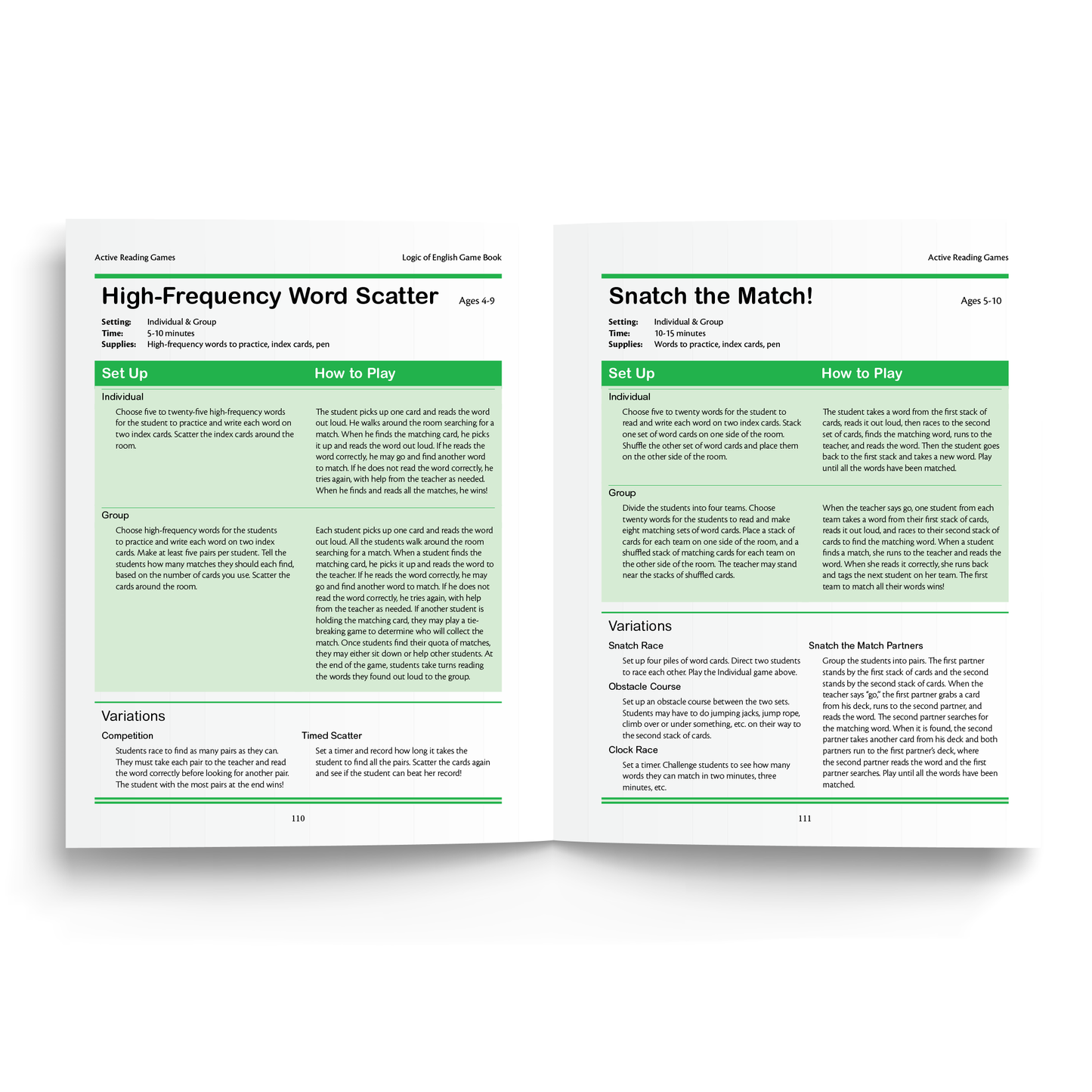
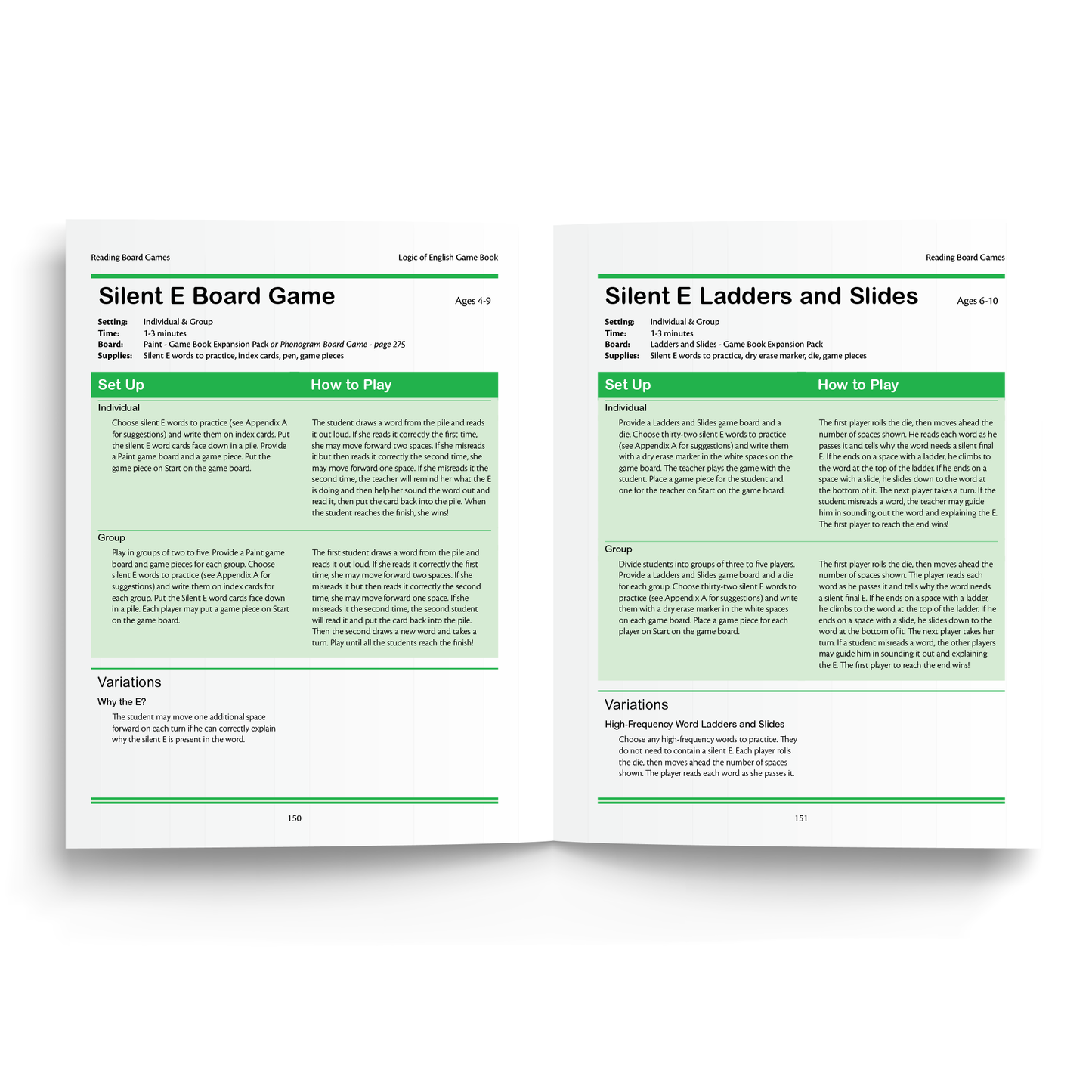
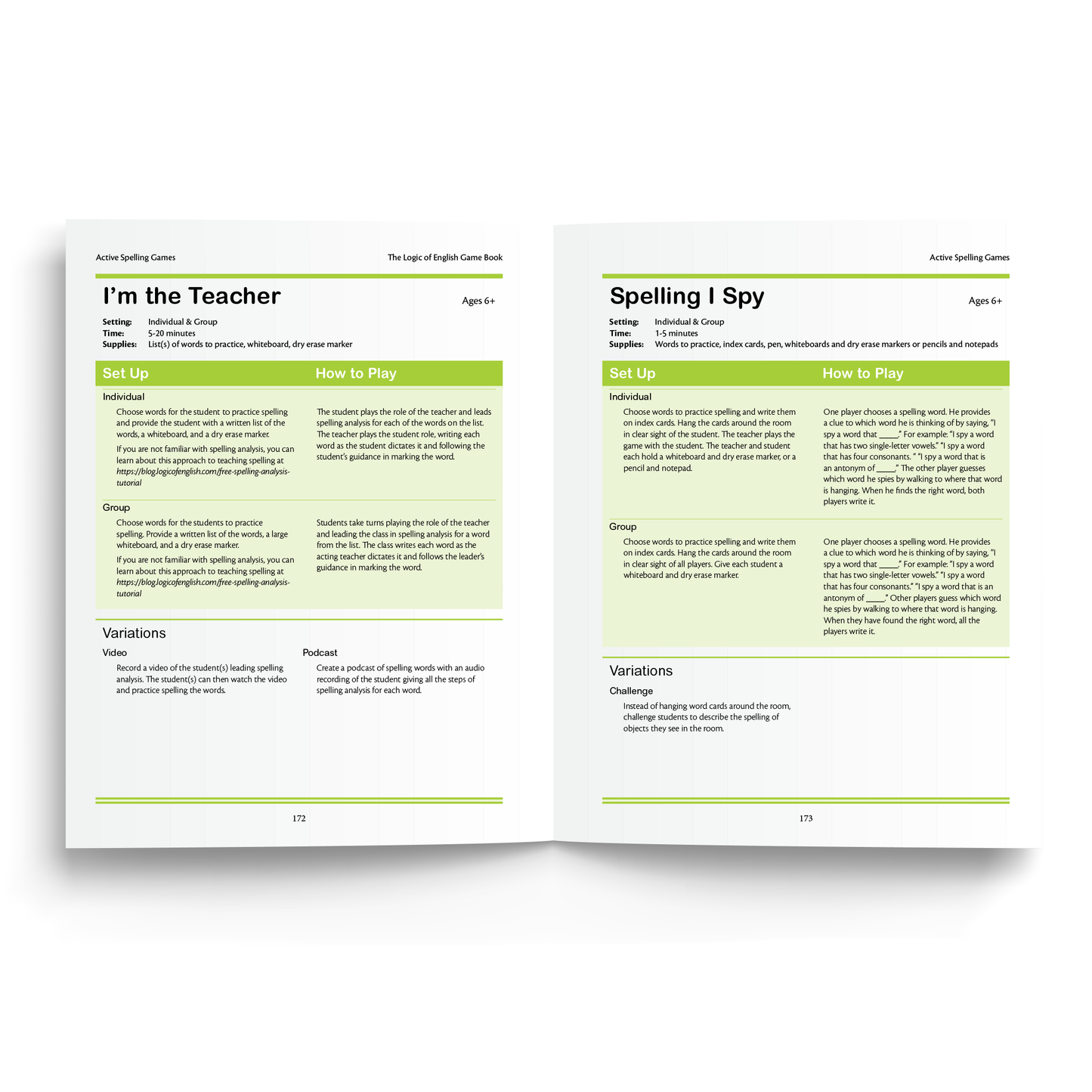
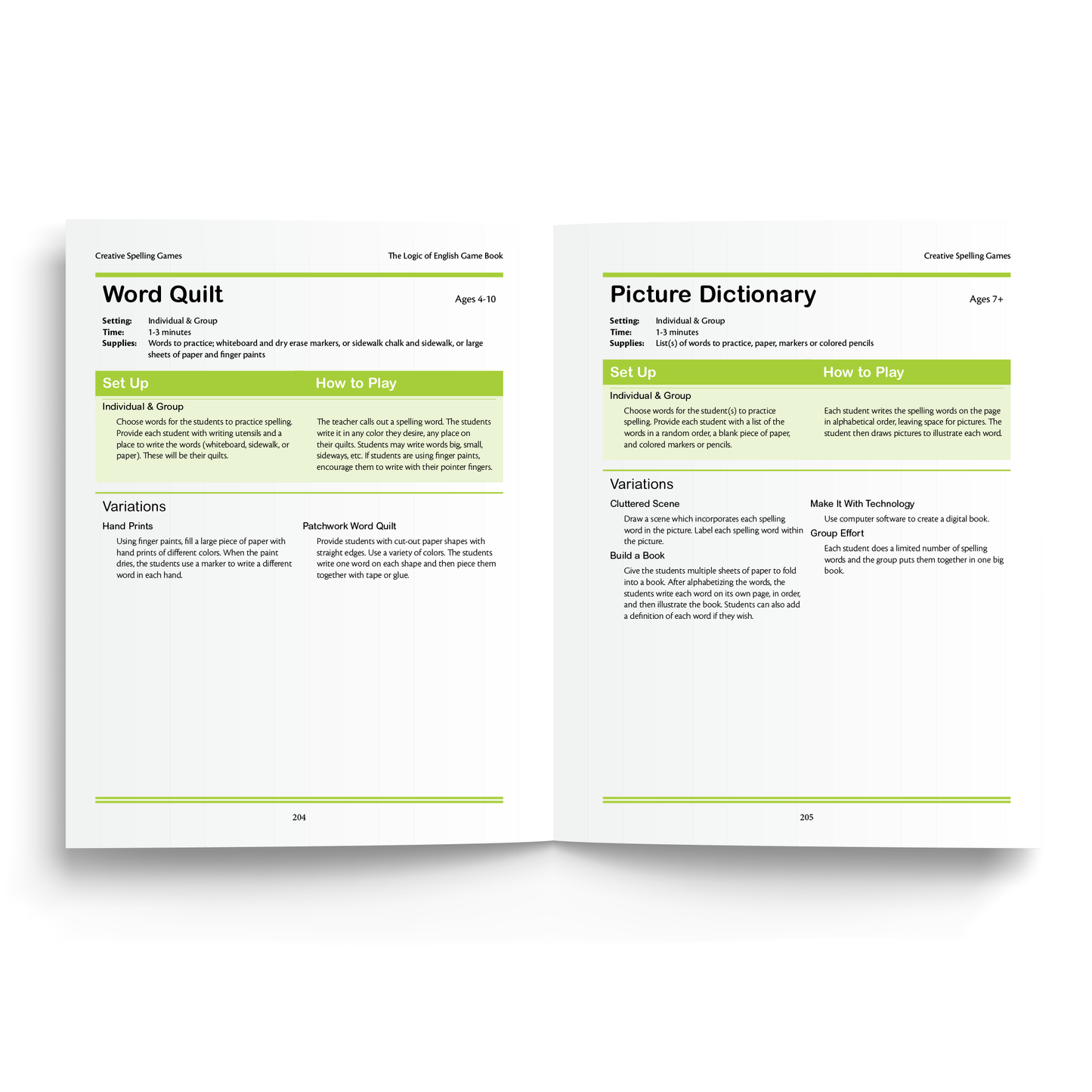
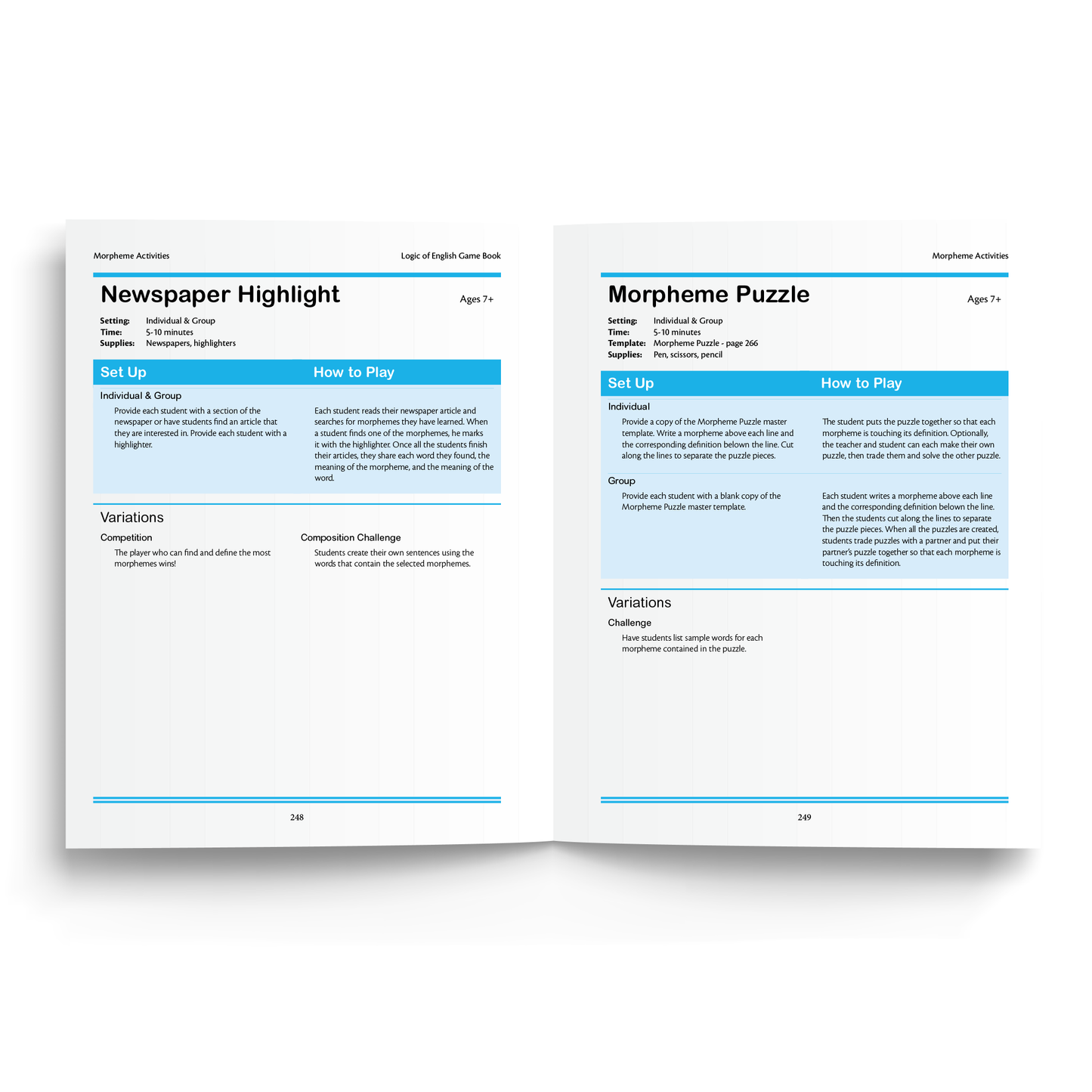
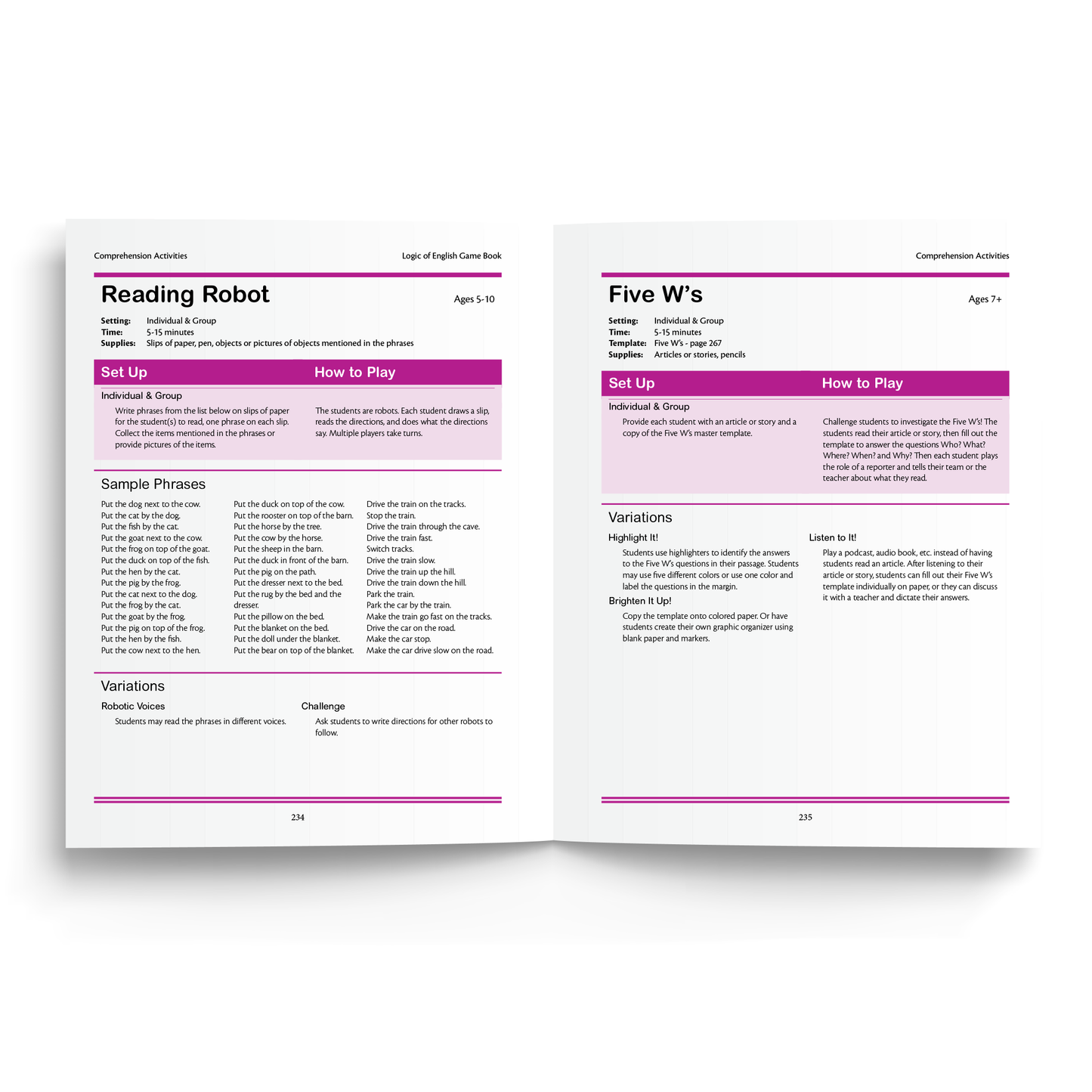
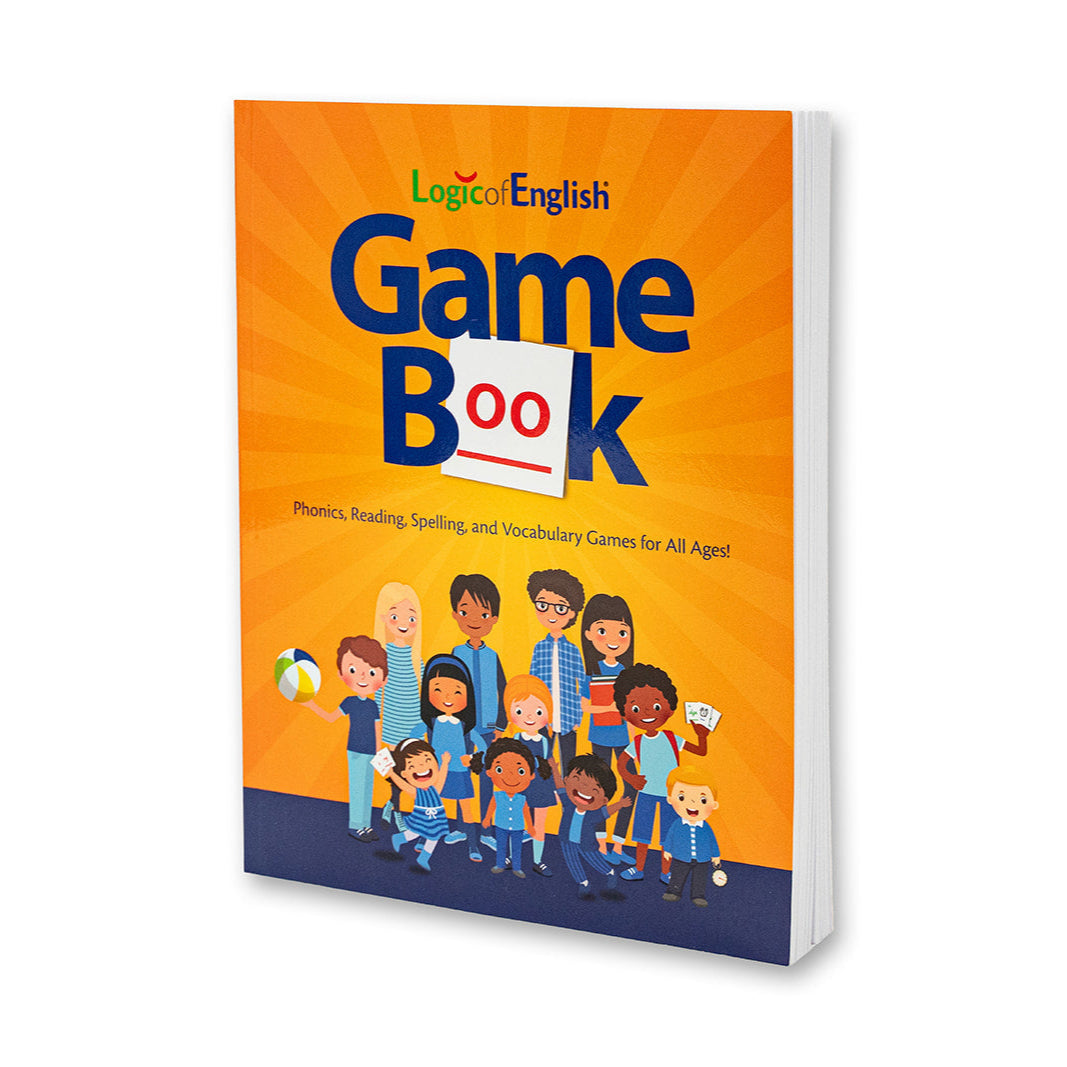
References
Boyer, N., & Ehri, L. C. (2011). Contribution of Phonemic Segmentation Instruction With Letters and Articulation Pictures to Word Reading and Spelling in Beginners. Scientific Studies of Reading, 15(5), 440–470. doi: 10.1080/10888438.2010.520778
Brady, S. (2020). A 2020 Perspective on Research Findings on Alphabetics (Phoneme Awareness and Phonics): Implications for Instruction (Expanded Version). https://www.thereadingleague.org/wp-content/uploads/2020/10/Brady-Expanded-Version-of-Alphabetics-TRLJ.pdf
Shriver, E. K. (2000). National Reading Panel. U.S. Government Printing Office. Retrieved from U.S. Government Printing Office website: chrome-extension://efaidnbmnnnibpcajpcglclefindmkaj/https://www.nichd.nih.gov/sites/default/files/publications/pubs/nrp/Documents/report.pdf















